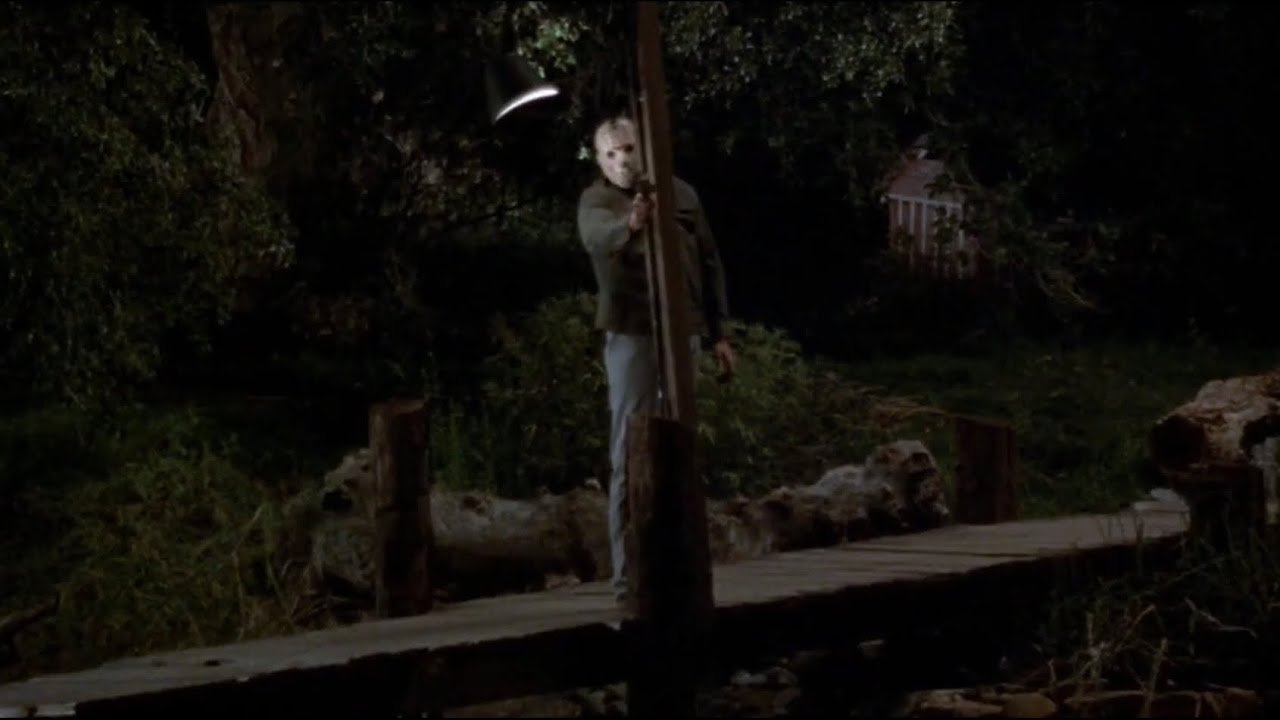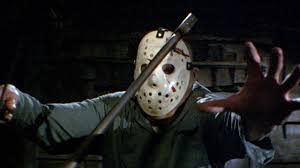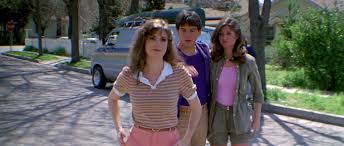🎬 Friday the 13th Part III (1982

Friday the 13th Part III (1982) Movie Review: A Slasher Classic with 3D Thrills
Friday the 13th Part III (1982) is a key entry in the legendary slasher series that has become synonymous with horror. Directed by Steve Miner and written by Carol Watson, this film marks a significant milestone in the Friday the 13th franchise as it introduces the iconic hockey mask worn by Jason Voorhees, the unstoppable killer at the heart of the series. Part III brings slasher thrills, gory deaths, and a sense of foreboding, all amplified by its groundbreaking use of 3D technology.
Plot Summary of Friday the 13th Part III
The film picks up shortly after the events of Friday the 13th Part II (1981), with Jason Voorhees continuing his killing spree in the woods surrounding Camp Crystal Lake. This time, a group of teenagers arrives at a secluded cabin near the lake for a weekend getaway, unaware that they are being watched by the masked murderer.
As Jason stalks the teens, the film takes the audience on a bloody and suspense-filled journey through the woods, where the teens must fight for their lives while uncovering the dark secrets of Crystal Lake. As expected, the movie delivers plenty of shocking kills, jump scares, and moments of tension, all while continuing to explore Jason’s bloodthirsty obsession.
In this installment, the iconic hockey mask, which would go on to define Jason’s appearance in future films, is introduced. This marks a pivotal moment in the series, as Jason begins his transformation into the infamous killer that fans have come to recognize.
A Game-Changing 3D Experience
One of the standout features of Friday the 13th Part III is its use of 3D technology, a novelty at the time of its release. This marks the first time in the series that the audience is treated to a 3D experience, a gimmick that adds a layer of intensity to the horror. From objects flying directly at the screen to gory kills designed to pop out at the viewer, the film makes full use of its 3D effects to create an immersive, visceral experience.
While 3D horror movies have become somewhat of a trend in the modern era, Friday the 13th Part III stands out for its use of the technology to enhance the scare factor. The 3D elements may seem dated by today’s standards, but for 1982 audiences, they were an exciting innovation that made the kills and gore feel even more immediate.
Jason Voorhees and the Iconic Hockey Mask
While Jason was already a menacing figure in the first two Friday the 13th films, Part III solidifies his place as a horror legend. This is the film where Jason’s look is forever cemented, as he trades in his burlap sack for the now-iconic hockey mask. This small yet significant change in his appearance would go on to define Jason’s character for the rest of the franchise.
The mask’s introduction is an iconic moment in the slasher genre, and it quickly became one of the most recognizable symbols of horror. The transformation from a man in a sack to the masked, silent killer added a sense of mystery and terror to the character. From here on, Jason would never be the same, and his hockey mask would become an inseparable part of his terrifying persona.
Characters and Performances
While Friday the 13th Part III may not be known for its deep character development, the film still introduces a variety of memorable figures that play the role of Jason’s victims. The group of teens that finds themselves trapped in Crystal Lake’s grasp is your typical 1980s slasher fare: a mix of stereotypes that include the jock, the geek, the couple, and the carefree friend. Despite being somewhat one-dimensional, these characters serve their purpose—creating tension and fear as they fall victim to Jason.
Tracie Savage, who plays the final girl, Chris Higgins, delivers a solid performance. As the heroine who must face off against Jason, Chris is resourceful and brave, offering the audience a strong protagonist to root for in the film’s final act. Chris’ backstory adds some depth to her character, and her eventual confrontation with Jason provides a satisfying payoff to the film.
On the other hand, Jason’s portrayal by Richard Brooker is truly memorable. With his towering figure, silent demeanor, and of course, the iconic hockey mask, Brooker’s version of Jason is chilling. His presence looms large throughout the film, and he continues to be one of the most feared and recognizable villains in horror cinema.
The Horror Elements and Gore
As a slasher film, Friday the 13th Part III delivers the kind of grisly violence that fans expect. The kills are graphic, creative, and downright brutal, with each murder scene designed to shock and disturb the audience. Whether it’s a character being killed with a harpoon, an axe, or an improvised weapon, the film doesn’t shy away from the blood and gore.
The 3D effects contribute to the film’s over-the-top violence, allowing the kills to feel even more immediate. Some scenes, like a character getting a machete to the face, are designed specifically for the 3D format, and they add an extra layer of terror to the experience. The graphic nature of the kills helps to elevate the horror and creates a memorable experience for fans of the slasher genre.
Cinematic Techniques and Direction
Director Steve Miner handles the pacing of Friday the 13th Part III with precision, maintaining a steady build of tension throughout the film. While the plot may not be groundbreaking, the direction ensures that the scares and suspense are consistently effective. The slow burn leading up to Jason’s rampage creates an atmosphere of dread, and the final showdown between Jason and Chris is a fittingly intense conclusion.
The film also makes effective use of its isolated setting, with the cabin and surrounding woods serving as a claustrophobic backdrop for the carnage. The atmosphere is one of impending doom, and the audience is drawn into the isolation of the teens as they try to survive the night.
Music and Soundtrack
As with the previous films in the Friday the 13th series, the music in Part III is a key element of the horror experience. The haunting score by Harry Manfredini adds a sense of unease to the film, with its iconic “ki-ki-ki, ma-ma-ma” theme becoming synonymous with Jason’s presence. The music builds the tension and helps to create a foreboding atmosphere, especially during the film’s many suspenseful moments.
Criticisms and Areas for Improvement
While Friday the 13th Part III is an enjoyable slasher film, it does have its flaws. The plot is predictable, and the characters are largely forgettable. Many of the deaths follow a similar formula, with the film relying heavily on gore and shock value rather than character development or plot twists. Some might argue that the 3D effects, while groundbreaking at the time, can feel gimmicky and dated when viewed today.
Additionally, while the film does offer some suspense, there are moments when the pacing lags, especially in the middle of the film. The buildup to Jason’s full-on killing spree could have been handled with more tension, as the middle section feels like filler between the more thrilling moments.
Conclusion
Friday the 13th Part III (1982) is a quintessential slasher film that solidifies Jason Voorhees’ place in horror history. The film’s iconic introduction of the hockey mask, its 3D gimmick, and its blood-soaked kills make it a must-watch for fans of the genre. While it may not be the most complex or innovative entry in the Friday the 13th franchise, it is undeniably a fun, suspenseful, and bloody ride that offers all the thrills one would expect from a classic slasher film.
For horror enthusiasts and fans of the Friday the 13th series, Part III remains an essential piece of the puzzle that helped define the slasher genre in the 1980s. Its combination of gore, suspense, and Jason’s chilling presence continues to resonate with audiences decades after its release.